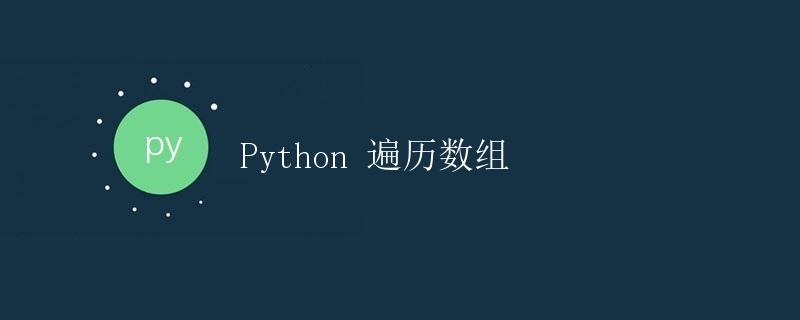Python 遍历数组

在编程中,经常需要对数组进行遍历操作,即依次访问数组中的每个元素。Python 提供了多种方式来遍历数组,本文将详细介绍这些方式,并提供示例代码和运行结果。
1. 使用 for 循环遍历数组
使用 for 循环是最常见的遍历数组的方式。在 Python 中,for 循环可以用来遍历数组中的每个元素,并执行相应的操作。
# 遍历数组并打印每个元素
arr = [1, 2, 3, 4, 5]
for element in arr:
print(element)
运行结果:
1
2
3
4
5
2. 使用 while 循环和索引遍历数组
除了使用 for 循环遍历数组,我们还可以使用 while 循环和索引来完成相同的操作。需要注意的是,在使用 while 循环遍历数组时,我们需要定义一个索引变量,并在循环中递增该变量。
# 使用 while 循环和索引遍历数组
arr = [1, 2, 3, 4, 5]
index = 0
while index < len(arr):
print(arr[index])
index += 1
运行结果:
1
2
3
4
5
3. 使用列表推导式遍历数组
列表推导式是一种简洁的方式,可以使用一个简短的语句来创建一个新的列表。我们可以利用列表推导式来遍历数组,并对每个元素执行一定的操作。
# 使用列表推导式遍历数组并生成新的列表
arr = [1, 2, 3, 4, 5]
new_arr = [element * 2 for element in arr]
print(new_arr)
运行结果:
[2, 4, 6, 8, 10]
4. 使用 enumerate() 函数遍历数组
enumerate() 函数可以同时返回数组的索引和对应的元素。我们可以利用该函数来遍历数组,并获取元素的索引和值。
# 使用 enumerate() 函数遍历数组
arr = [1, 2, 3, 4, 5]
for index, element in enumerate(arr):
print(f"Index: {index}, Element: {element}")
运行结果:
Index: 0, Element: 1
Index: 1, Element: 2
Index: 2, Element: 3
Index: 3, Element: 4
Index: 4, Element: 5
5. 使用 numpy 库遍历数组
如果我们在 Python 中使用 numpy 库进行科学计算时,可以使用 numpy 库提供的方法来遍历数组。numpy 库提供了更高效的方式来处理大型数组。
import numpy as np
# 使用 numpy 库遍历数组
arr = np.array([1, 2, 3, 4, 5])
for element in arr:
print(element)
运行结果:
1
2
3
4
5
6. 使用 itertools 库遍历数组的所有子集
itertools 是 Python 提供的一个标准库,其中包含了多种处理迭代器的函数。我们可以使用 itertools 库中的函数来遍历数组的所有子集。
import itertools
# 使用 itertools 库遍历数组的所有子集
arr = [1, 2, 3]
for i in range(len(arr) + 1):
combinations = itertools.combinations(arr, i)
for combination in combinations:
print(combination)
运行结果:
()
(1,)
(2,)
(3,)
(1, 2)
(1, 3)
(2, 3)
(1, 2, 3)
总结
本文介绍了使用 Python 遍历数组的多种方式,包括使用 for 循环、while 循环和索引、列表推导式、enumerate() 函数、numpy 库以及 itertools 库。
 极客教程
极客教程